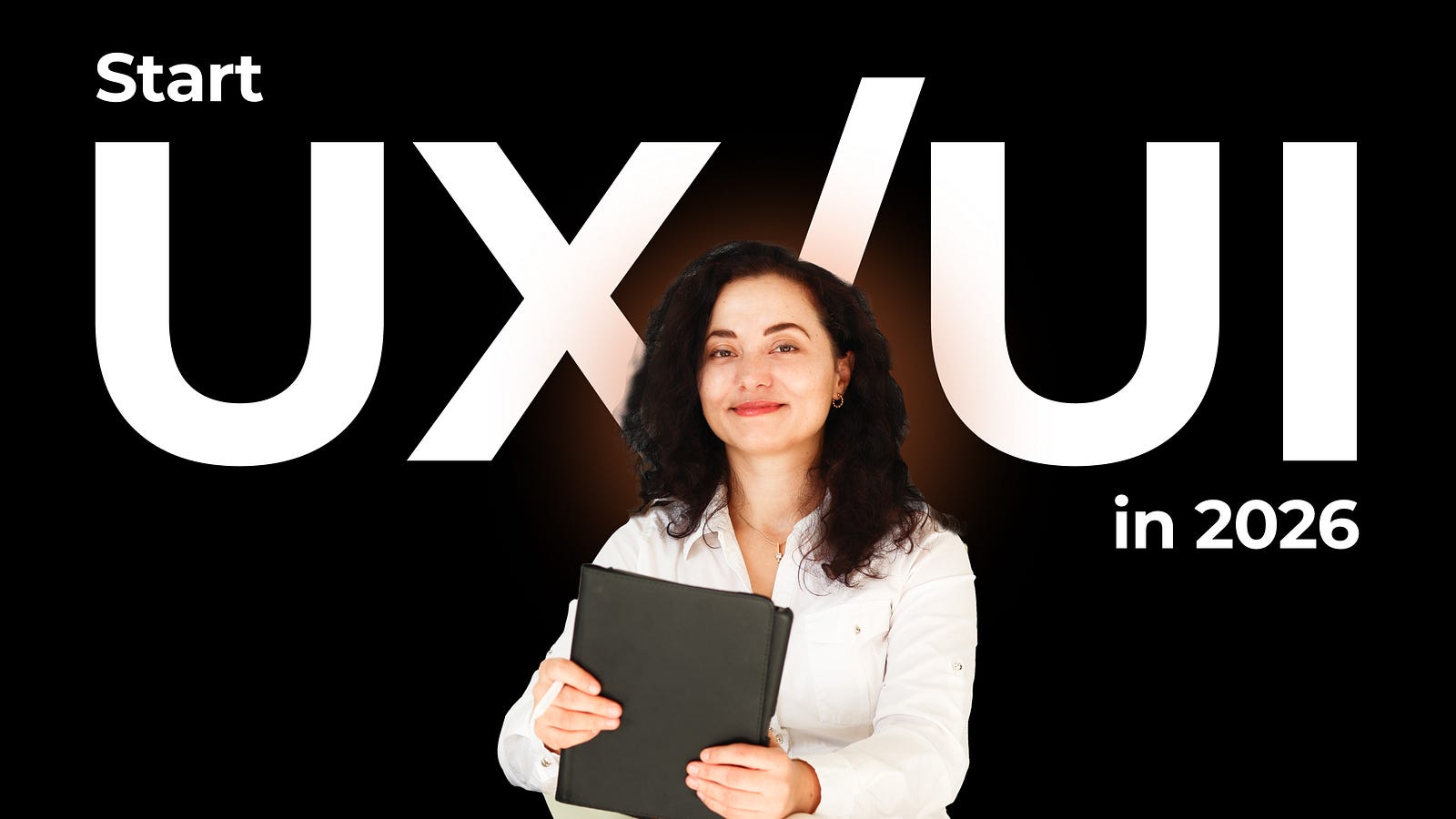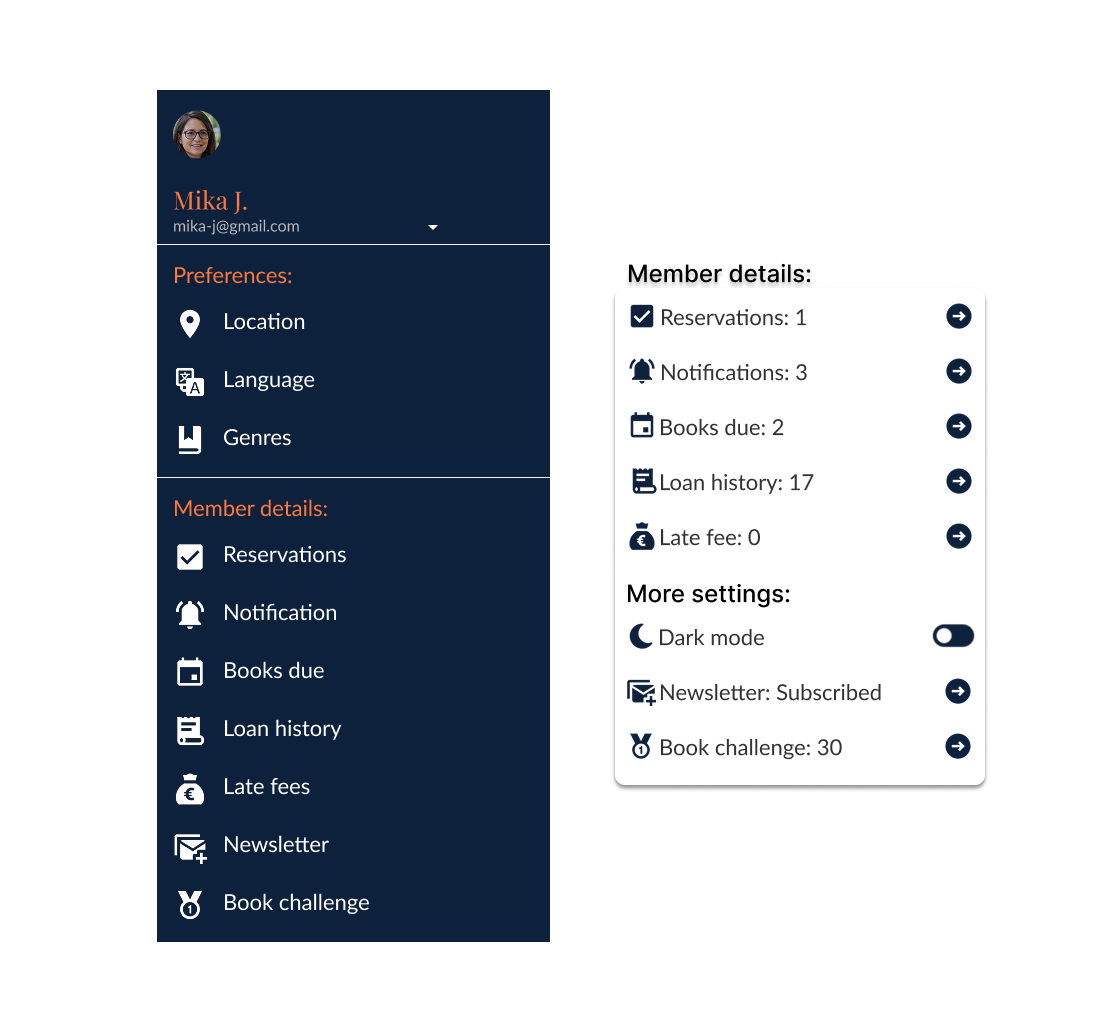October 6, 2025
A lot has happened, and here is how I would approach these testing times if I were entering the UX field in 2026.

1. First, I would cry for a bit.
This is what I did at some point in 2022 as well, because of the overwhelming amount of information I consumed about the topic. All the tutorials, content creators, all the bootcamps and options. You know what I’m talking about.
2. After that, I would create a plan and a timeline.
I would then start by learning about freelancing and UX/UI while I am still working my 9-to-5.
In this plan and timeline, I would outline what wins I’m looking for in the long run.
Example: make 3000 euros in 3 months while freelancing or getting 3 job interviews within a month.
3. Keeping my regular job.
It was luck that I started freelancing while the world was still getting used to the idea. But now there is an influx of freelancers, digital nomads, remote workers, and did I mention that AI agents are replacing some jobs?
I would base my decisions on my location. I would also decide whether to focus on freelancing or start searching for a paid design internship or a job, either outside of my location or on-site.
4. Educate myself — After exploring and researching the markets for no more than 2 weeks, I would sign up for a UX course or university course. If I don’t have any options locally, I will go for the Google UX Course on Coursera.
I would also check if financial aid for this course is still available, as it was before. Some Employment centres and programs provide discount coupons for higher education and courses too. 😉
Would also consider partnering up with other designers early on and working on joint mini case studies I could use for my portfolio.
5. Saving money and figuring out my passion
When picking a problem for the Google UX course, I will make sure to pick a good one with real potential and impact. Solving a real problem. Something that I am genuinely passionate about, and I can see it being improved and implemented. After I complete the project, I will tell everyone about it. Make an article, record a mini series on the topic and get people talking.
6. Read books that will support my journey
After completing the course, I would focus on reading “The User Experience Team of One: A Research and Design Survival Guide” first, together with “Articulating Design Decisions: Communicate with Stakeholders”

7. Create projects for my portfolio and start freelancing, and present myself as a product.
I would document all my learnings and start freelancing for small projects so I can get material for my portfolio. I would also share all my knowledge for free online.
While freelancing, I would also explore what I am leaning more towards:
After I know the answers to these questions, I will know how to position myself and finally define which skills to sharpen for getting into a potential niche later on.
I wouldn’t be afraid of the title generalist. I would consider it part of my curiosity trait as a person.
After acquiring 3 portfolio pieces, I will know then if I want to go for a job interview with a company or continue freelancing.
This is a major pivoting point and changes your whole career path and goals.
8. If I decide to be a freelancer, I will explore options for financial support
I would choose freelancing, and then I would focus on securing a financial government grant again.
After writing my business plan and finding that it is approved, I would quit my job and sign up at the Employment Office as unemployed.
While waiting for the paperwork to be accepted, I would network! With designers, developers and small businesses which have similar or better mindsets than mine.
I would talk about my plans and ideas, and share my excitement to start working independently and looking for paid collaborations.
9. I would find a mentor
I would also allocate a budget for a mentor to help me position myself and explore different areas I can grow.
Sometimes the opportunities are just right there, but we either don’t see them or we just need a little push to start acting on them.

10. Network and find peers early on
I would find my people way earlier! I would reach out for more coffee chats, join local and online events, design and tech communities and exchange information and knowledge.
You wouldn’t guess it at first, but some of my projects have come from other designers, collaborating with them or being referred. So don’t hesitate to befriend, trust, help and share resources and information with other peers.
11. Sign up for free therapy or start intentional journaling
This helps me a lot still to this day. It is not as effective as therapy, but it is a small self-care tip that helps me stay motivated, organised and consistent. Whenever I see a therapy workshop, I sign up as well and do my best to keep my work/living space as clean as possible, as well as my busy mind.

12. Explore AI tools that can enhance my process
I would test each new tool and try to implement it in my process. Either being in the visual part of my designs, like generating wireframes, prototypes or helping me conduct user testing scripts, questionnaires, organise and plan user interviews or simply vibe code a portion of my design idea as a mini demo to support my case study.
If I decide to work for a company, I would focus on how to use tools like Replit and Lovable. Would try to understand and polish my prompting skills to get the best prototyping results that project managers and stakeholders would want.
13. Reconsider picking a niche early on
In the beginning, that’s probably almost impossible without knowing which industry and businesses you are more drawn to helping.
You can do it by focusing your content on:
What would you do if you started your UX career in 2025? Let me know in the comments below! ☺️
---
Do you like what you read? Show your support by:
Sharing is caring!
P.S. If you want to be part of my journey, you can find me on Instagram @angelova.nikoleta.design and on LinkedIn (Nikoleta Angelova).
Struggling with design and development? Join me on my YouTube channel, where I explain web design, user experience and development practices and stream occasionally. 🤓
Availability Note:
I work with a maximum of 2 clients at a time to make sure each project and client gets my undivided attention. Hence, once I am fully booked I can only offer you the next available time slot. So make sure to send your request on time!
I will get back to you within 48 hours.